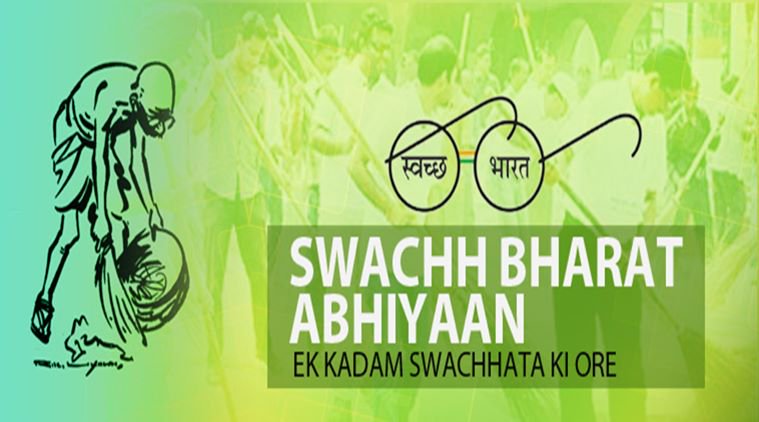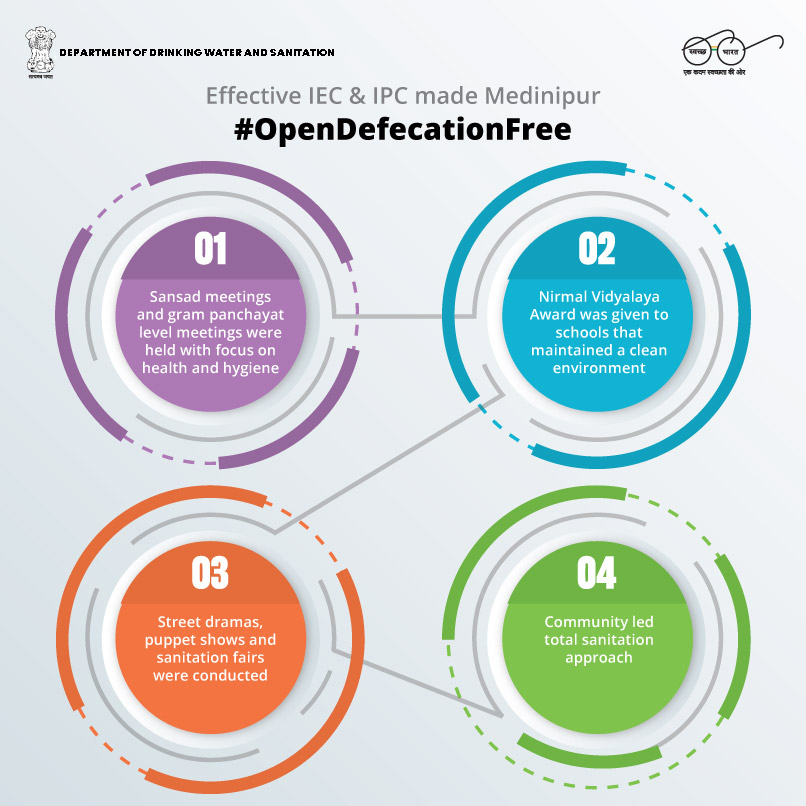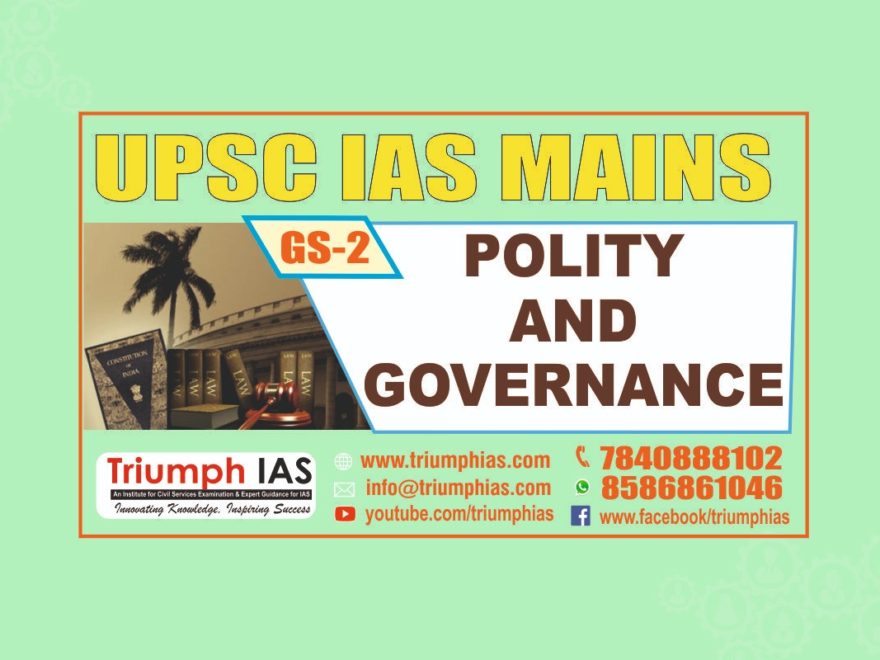SWACHH BHARAT MISSION II AND SAMPOORNA SWACHHATA
Relevance:
G.S paper II: Government Schemes and planning

Swachh Bharat Mission Phase I:

- Swachh Bharat Mission in its first phase devoted itself to making India open defecation free (ODF).
- The Swachh Bharat Mission became the world’s largest behaviour change programme by working towards making India open defecation free in a period of five years.
- Rural sanitation coverage has increased from 39 percent in 2014 to 100 percent in 2019 with over 10.2 crore toilets built across Indian districts.
- Various global agencies such as UNICEF, WHO and others have estimated significant economic, educational, environmental, health and social impacts of the Swachh Bharat Mission’s ODF achievements.
- India achieved the SDG Goal for providing safe sanitation for all 11 years before the targeted year of 2030.
- The success of the programme is attributed to the 4 Ps – political leadership, public financing, partnerships and public participation.
Swachh Bharat Mission Phase II:
- The Government of India, in February 2020, approved the Phase II of the Swachh Bharat Mission. Grameen (SBM-G) to focus on solid and liquid waste management (SLWM) and on the sustainability of ODF status.
- The Swachh Bharat Mission in its second phase is committed to achieving Sampoorna Swachhata by transforming the mission into a Jan Andolan.
- The Department of Drinking Water and Sanitation is implementing it in Mission Mode from 2020-21 to 2024-25.
- Phase lI will provide impetus to the rural economy through the construction of household toilets and need-based community sanitary complexes, as well as the infrastructure for solid and liquid waste management such as compost pits, soak pits, waste stabilisation ponds, bio-gas plants, material recovery facilities, etc
Objectives of the SBM Phase II:
- The key objective of the SBM Phase II is to make villages across India ODF Plus villages. An ODF Plus village is defined as a village that sustains its open defecation free (ODF) status and also ensures solid and liquid waste management and is visually clean.
- The components of the SBM Phase II include the construction of individual household latrines, retrofitting of toilets, need-based construction of community sanitary complexes, biodegradable waste management. GOBAR-dhan (Galvanising Organic Bio-Agro Resources-dhan), plastic waste management, greywater management and faecal sludge management.
Guiding Principles for SBM Phase II:
- Ensuring that no one is left behind. Need to ensure that all eligible households may be provided with an incentive to build toilets.
- Promotion of Reduce, Reuse and Recycle principle to reduce the generation of waste at source.
- The utilisation of Existing SLWM infrastructure wherever possible by rejuvenating, upgrading and putting them to use.
- Clustering of villages to achieve maximum economic efficiency.
- Encouragement of technologies with low operation and maintenance costs.
- States will have flexibility by deciding the appropriate implementation mechanism and technologies.
- Convergence with other schemes.
- Creating self-sustainable revenue models/business models by encouraging the private sector to leverage its expertise and resources for meeting the growing demand of SLWM. Promote interventions that are based on remunerative models and on principles of cost-sharing, cost recovery and revenue generation.
Information, Education and Communication (IEC):
- Phase I is claimed as the world’s largest behaviour change communication programme. The IEC of the Swachh Bharat Mission campaign had seen thousands of behaviour change campaigns, iconic mass media campaigns and participation of millions of students, women, teachers, cadets, celebrities, political leaders, faith leaders and people from all walks of life; making it a true Jan Andolan.
- SBM Phase II also aims at behaviour change of the masses to adopt better sanitation and hygiene practices. Therefore, IEC is the key to the success of the SBM.
- 5 percent of the total project expenditure has been provided for IEC and Capacity Building for SBM(G) Phase II. In Phase I, it was 8 percent for the IEC.
- States/UTs are expected to lead the IEC and Behaviour Change Communication (BCC).
- Key IEC messages for ODF Plus are – Waste Segregation and Source, Menstrual Waste Management and Hygiene Promotion.
Capacity Building:
- Training workshops, refresher trainings for sensitisation, awareness generation and technical know-how are important to build the capacity of human resources to lead and sustain SBM Phase II activates.
Role of Panchayati Raj Institutions (PRIs):
- As per the Constitution 73rd Amendment Act, 1992, sanitation is included in the 11th Schedule. Therefore, the role of Gram Panchayats (GP) is pivotal in implementing SBM (G). All institutions and committees working within the GP framework have to prioritise sanitation within their programmes.
- Receiving funds, subject to conformity with State arrangements, and contributing from their own resources for the financing of community toilets and SLWM infrastructure are some of the important roles of the PRIs.
- The GP is also the custodian of the assets such as community sanitary complexes, drainages and SLWM infrastructure.
Financial Planning and Programme Funding:
- SBM (G) is a centrally sponsored scheme with fund sharing pattern between the Centre and the States being 90:10 for North-Eastern States, Himachal Pradesh, Uttarakhand and UT of Jammu and Kashmir; 100 percent from Centre for remaining UTs and in a ratio of 60:40 for other States.
- The SBM (G) Phase II funds are released to States/UTs based on their performance and ability to achieve programme results.
- A condition for the release of funds from the Centre is that only after the respective government provides the undertaking that the funds earmarked under the 15th Finance Commission grants for sanitation activities are being devolved to rural local bodies, SBM (G) funds will be released to the States.
-
- The 15th Finance Commission provided tied grants for sanitation to rural local bodies.
Research and Development:
- Review of sanitation technologies, promotion of appropriate technologies, strengthening decentralised O&M and use of technology for monitoring the progress of the programme are some of the areas worth focussing on.
- A Research and Development Advisory Committee under the chairpersonship of Joint/Additional Secretary of the Department works to promote research and development activities for sanitation.

